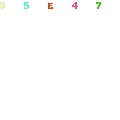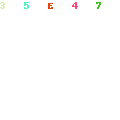This article, from freelance writer and illustrator Debbie Ridpath Ohi, originally appeared on her Inkygirl.com site. It is reprinted here in its entirety with her permission, but as it is updated frequently, we strongly recommend you bookmark the source article and revisit it from time to time. Debbie is best known for her Inkygirl comics, which are geared to writers.
It took me a while to check out a chat on Twitter because I figured it would be complicated, and I lacked the time to learn a new user interface. To my surprise, it was MUCH simpler than I expected…and a lot of fun!

(Updated by @inkyelbows on August 24, 2009)
Compact writer chat schedule (for details, read further down on page):
EVERY DAY: #amwriting, #writegoal, #writingparty plus others (see hashtag list below)
SUNDAYS: #writechat
MONDAYS: #litchat, #journchat
TUESDAYS: #kidlitchat
WEDNESDAYS: #litchat, #memoirchat, #wnw, #editorchat
THURSDAYS: #poetry, #dnchat
FRIDAYS: #platformchat, #litchat, #scifichat
SATURDAYS: #ScreenwritingSaturday
If you’ve never tried a Twitter chat, here are some tips to help you get started:
What IS a Twitter chat?
A chat on Twitter basically consists of people making posts that include a particular hashtag (words that start with ‘#’). To read posts made in a chat, you just search for that hashtag in Twitter. Here’s a sample search for the hashtag ‘#writechat.’
If all you want to do is monitor a chat and not say anything, that’s all you need to know. You’ll need to refresh the page to see updated posts.
If you want to say something in the chat, just post your comment to Twitter, but make sure the hashtag is included somewhere in your post so other people in the chat will see it. That’s the simplest way to participate in a chat so if you’re in a hurry, there’s no need to read further.
However, it can be a hassle to have to manually add the chat hashtag each time you post (and inevitably you forget) and also to keep refreshing the search result page. To make Twitter chats a more pleasant experience, there are many Twitter chat tools available (for free!); I’ve included a list of some later in this page.
Where to find Twitter chats for writers
These dates/times are accurate as of today, as far as I know. Info may change, however, so be sure to verify this info by checking the hashtag before attending your first chat. Info was excerpted from Meryl.Net’s great list of chats, this Google Docs chat list, Twitter, and comment posts. If you run a regular Twitter chat for writers that is not listed below, please post info in the comments at the bottom.
Every day (”slow chats”)
The following are more motivational groups rather than scheduled Twitterchats, but are still a great way of meeting other writers on Twitter.
#amwriting: Every day
See @johannaharness’s FAQ.
When: anytime.
Other hashtags of interest to writers: #authors, #pubtip, #nanowrimo, #writegoal (post your daily writing goals and get inspired by reading goals by other writers),#wip, #wordcount, #writetip, #novelists, #writers, #writing, #writingparty.
Reminder: Hashtags are useful in filtering Twitter posts, but DON’T OVERUSE THEM. Here’s a great post about how to use and not use hashtags.
Scheduled
#writechat: Sundays
Topic or topics are usually announced at the beginning of the chat.
Moderated by @WritingSpirit
PST: 12-3 pm
MST: 1-4 pm
CST: 2-5 pm
EST: 3-6 pm
#journchat: Mondays
PST: 5-8 pm
MST: 6-9 pm
CST: 7-10 pm
EST: 8-11 pm
#kidlitchat: Every Tuesday starting July 21st
Craft & business of writing for young people, board books up through YA. Topic or topics are usually announced at the beginning of the chat.
Moderators: @gregpincus, @bonnieadamson
PST: 6 pm
MST: 7 pm
CST: 8 pm
EST: 9 pm
#litchat: Monday, Wednesday, Friday
Mission is to connect readers with books and authors.
Moderator: @litchat.
Transcripts on blog.
PST: 1-2 pm
MST: 2-3 pm
CST: 3-4 pm
EST: 4-5 pm
#WNW:
Wednesdays
Wednesday Night Writer. Fantasy/Fiction discussion group on Twitter.
Moderator: @_decode_ .
PST: 5-8 pm
MST: 6-9 pm
CST: 7-10 pm
EST: 8-11 pm
#memoirchat: Every other Wednesday at 8 p.m. EST.
Moderator: @alexisgrant
For writers of memoir.
#editorchat: Wednesdays
…A place for professional writers and editors who use the micro-blogging service Twitter to discuss how best to help one another.
Moderator: @LydiaBreakfast
PST: 5:30-8 pm
MST: 6:30-9 pm
CST: 7:30-10pm
EST: 8:30-11pm
#poetry: Thursdays
We talk poetry. Readers, writers, and all others encouraged to join. Moderator: @gregpincus.
PST: 6-7 pm
MST: 7-8 pm
CST: 8-9 pm
EST: 10-11 pm
#dnchat: Thursdays
For those who write fiction for online publication. “DN stands for DigitalNovelists.com, which is the platform most of us in the group publish on, but all web fiction writers and fans of web novelists are welcome.”
PST: 8-9 pm
MST: 9-10 pm
CST: 10-11 pm
EST: 11 pm-12 am
[Publetariat Editor’s Note: also check out #followreader, on Thursdays at 1pm PST, 2pm MST, 3pm CST and 4pm EST. Each week features a different topic of interest to authors, publishers and readers]
#scifichat: Fridays
Moderated by: @DavidRozansky. Follow @scifichat for schedule changes and announcements.
PST: 11-2 pm
MST: 12-2 pm
CST: 1-3 pm
EST: 2-4 pm
#platformchat: Fridays.
Moderator: @thewritermama.
PST: 11-12 am
MST: 12-1 pm
CST: 1-2 pm
EST: 2-3 pm
#scifichat: Fridays
Moderated by: @DavidRozansky
PST: 11-1 pm
MST: 12-2 pm
CST: 1-3 pm
EST: 2-4 pm
#ScreenwritingSaturday:
Saturdays (all day)
Moderator: @UncompletedWork.
To see other chats, please visit Meryl.Net’s list of chats and What The Hashtag.
USEFUL TWITTER CHAT CLIENTS
You don’t have to have a special Twitter chat tool to participate in a Twitter chat, but it can make things easier.
TweetChat: This is my favourite so far. Very simple to use. Web-based, just enter the hashtag you want to follow, enter the chat room, and you don’t have to keep adding the hashtag to every post because TweetChat does it for you.
TweetGrid: Also Web-based. You can participate in more than one chat at the same time but this means you have to enter the hashtag each time you post to make sure it goes to the right room. I find it enough of a challenge keeping up with ONE chat and can’t imagine trying to participate in more than one, though.
TweetDeck: If you use this desktop app, then you can create a column that filters the hashtag/chat name.
Related sources:
Meryl.net’s article abou Twitter chat clients
10 Free Twitter Chat Tools
FOR THOSE NEW TO TWITTER CHATS
Tweeting With Your Twitter Community: How To Participate In A Twitter Chat by Jeff Hurt
How to Join Twitter Chats from Meryl.net
How To Participate In A Twitter Chat
A FEW TWITTER CHAT TIPS
If you’re arriving after the chat has begun, try to catch up on older posts to find out what you missed. DON’T start posting right away — you may be interrupting a moderated chat with guest authors or editors, or there may be a particular theme or topic of discussion.
Don’t get angry if people seem to be ignoring your posts. In a crowded chat, posts often go by very quickly and people often miss reading some posts. System lag can also delay the public appearance of posts. Wait a little and then try re-posting.
I’ve found it handy to keep an extra window open, to monitor any “@” replies I may have missed seeing in the main chat window.
If you’re replying to someone’s comment, be sure to include that person’s account name in your post so they see it.
If you’re using a regular Web browser, include the proper chat name hashtag, or no one in the chat will see your post.
Proofread your tweet before posting.
Try to stay on topic, if there is a topic of discussion.
Don’t forget that if you have a protected Twitterfeed, people won’t be able to see your posts unless they’re following you. Consider opening a separate (and public) feed for chats.
If you use one Twitter account for regular posts as well as for chats, you may want to warn your followers that you’re about to participate in a chat and may therefore be posting a LOT for the next little while. Or you might consider having a separate account just for chats. Here’s how I tweet.
Even though the environment may seem intimate and casual, ALWAYS REMEMBER that your posts are public. You can always count on someone taking a screenshot of an embarrassing post before you have a chance to delete it, plus certain types of feeds will still retain your post even if you delete it. Never, ever post in anger; don’t forget what happened to Alice Hoffman.
Never post in anger. (see above) I know I keep harping on this, but I’ve seen far too many writers make this mistake and regret it later. If you want to disagree with someone, do so respectfully. Don’t let someone goad you into a flamewar. Also remember that people reading your Twitter page will only see your posts, and not the others in the discussion. These readers may include other authors, editors, and agents whose professional opinion of you may be altered for the worse, depending on what you post.
TWITTER CHAT ACRONYM PRIMER
I’m still learning the acronyms, but here are some you may come across in a Twitter chat for writers:
YA = young adult
MG = middle grade
UF = urban fantasy (thanks to @tom_hummer)
FWIW = for what it’s worth
LOL = laughing out loud
LMAO = laughing my ass off
RT = retweet (usually precedes the Twittername of the person who is being quoted or retweeted)
BFN = bye for now
TTFN = ta ta for now
BRB = be right back
Here are some other chat acronyms
Chat acronyms used in e-mail, IM and text messaging (includes handy search box)
FOR THOSE WHO WANT TO RUN A TWITTER CHAT
How to Run a Successful Twitter Chat (from Meryl.net)
FOR THOSE NEW TO TWITTER OR TWITTERCHATS:
10 Ways Twitter Can Help Writers by Debbie Ridpath Ohi
The Twitter Chat Experience – by Swan
What Tweetchats Can Do For You by Ami Spencer
Twitter FAQ: RT, HT, OH, ETC by Brent Ozar
Twitter 101: Clarifying The Rules For Newbies from SheGeeks.net.
The Beginner’s Guide to Twitter – by Michael Hyatt (CEO, Thomas Nelson)



